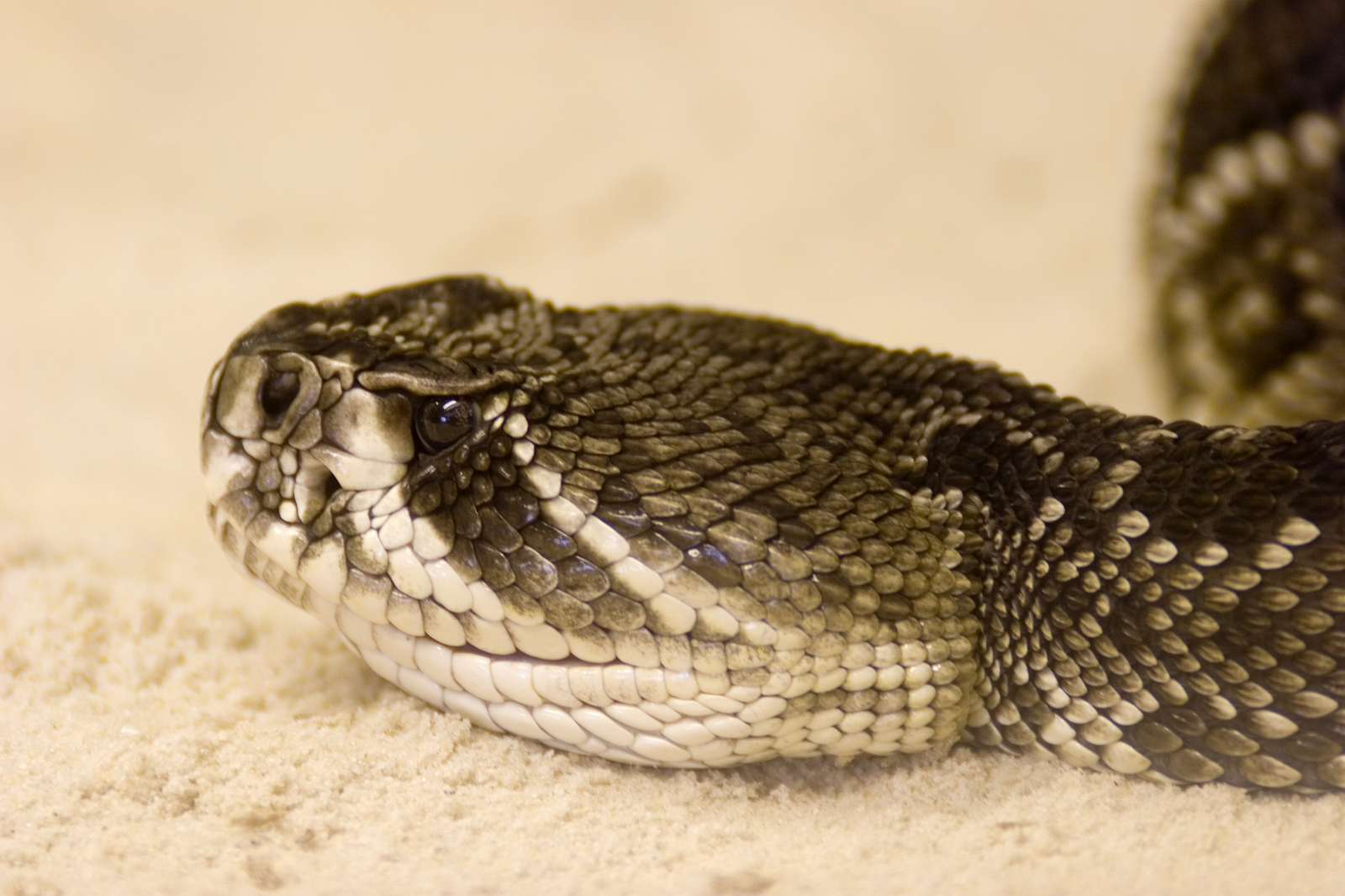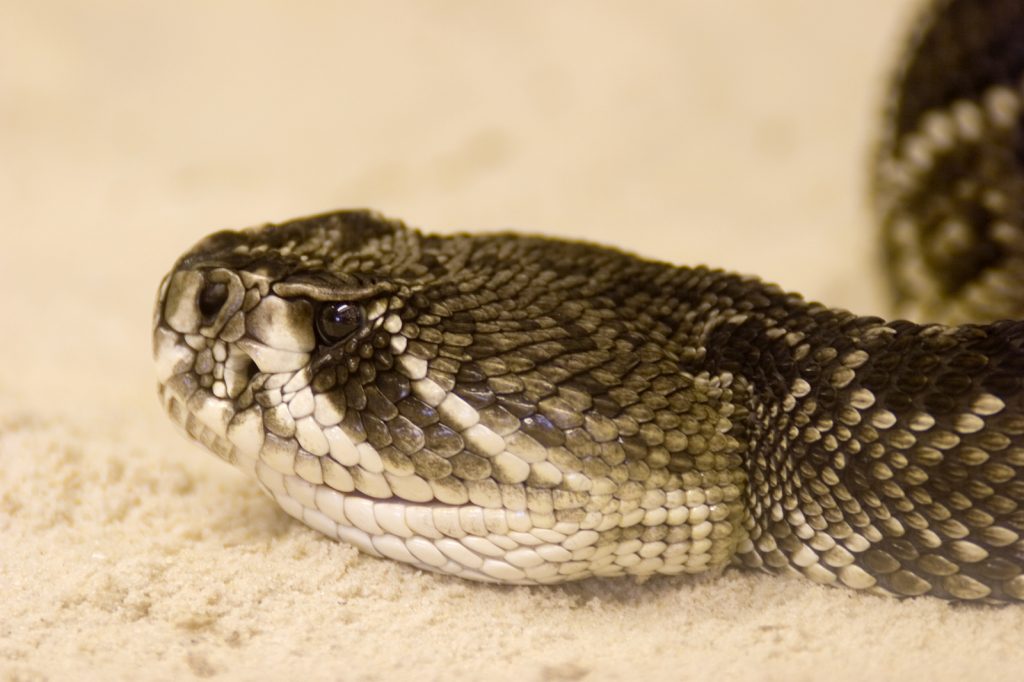Rattlesnakes are fascinating creatures that are both feared and admired. They are known for their distinctive rattle, which has earned them their name. But have you ever wondered if rattlesnakes are pit vipers? This is a common question among those who are curious about these creatures.
To answer this question, we must first understand what a pit viper is. Pit vipers are a group of venomous snakes that have a heat-sensing organ on their head called a pit. This pit allows them to detect the body heat of their prey, even in complete darkness. So, are rattlesnakes part of this group? Let’s find out!
Yes, rattlesnakes are pit vipers. Pit vipers are a subfamily of venomous snakes that have heat-sensing pits on their heads. These pits help them locate warm-blooded prey, even in complete darkness. Rattlesnakes are known for their distinctive rattle at the end of their tails, which they use to warn potential predators or threats. They are found in various habitats throughout North and South America.

Are Rattlesnakes Pit Vipers?
Rattlesnakes are a type of venomous snake that are commonly found in North and South America. They are known for their distinctive rattle on the end of their tail, which they use to warn potential threats. But are rattlesnakes considered pit vipers? Let’s find out.
What are Pit Vipers?
Pit vipers are a subfamily of venomous snakes that are characterized by a heat-sensing pit located between the eye and nostril on each side of their head. This pit allows them to detect the body heat of their prey, which makes them extremely effective hunters. Pit vipers are found all over the world, and include species such as copperheads, cottonmouths, and rattlesnakes.
Rattlesnakes are indeed considered pit vipers, as they have the characteristic heat-sensing pit located on their head. The rattle on their tail is just an added feature that sets them apart from other pit vipers.
Physical Characteristics of Rattlesnakes
Rattlesnakes are easily recognized by their rattle, but they also have other physical characteristics that set them apart from other snakes. They have a triangular-shaped head, a thick body, and a series of dark, diamond-shaped markings along their back. Their venomous fangs are located at the front of their mouth, and are used to inject venom into their prey.
Rattlesnakes come in a variety of colors, including green, brown, and gray. Some species even have bright patterns on their skin that help them blend in with their surroundings.
Benefits of Rattlesnakes
Despite their fearsome reputation, rattlesnakes actually play an important role in their ecosystem. They help to control populations of rodents, which can cause damage to crops and spread disease. Rattlesnakes also serve as food for other animals, such as birds of prey and coyotes.
In addition, rattlesnake venom has been found to have potential medical uses. It contains proteins that can be used to create antivenom, as well as enzymes that can be used in the treatment of heart disease and blood clots.
Rattlesnakes vs Other Pit Vipers
While rattlesnakes are considered pit vipers, there are some differences between them and other species in the subfamily. For example, some pit vipers, such as the copperhead, have a more muted coloration that helps them blend in with their surroundings. Rattlesnakes, on the other hand, have more distinct markings that make them easier to spot.
Another difference is in their behavior. Rattlesnakes are known for their distinctive rattle, which they use to warn potential threats. Other pit vipers may use different methods to deter predators, such as hissing or puffing up their body to look larger.
Should You Be Afraid of Rattlesnakes?
While rattlesnakes are venomous, they are not necessarily something to be afraid of. They are generally not aggressive towards humans, and will only attack if they feel threatened. Most rattlesnake bites occur when humans accidentally step on or disturb them.
If you live in an area where rattlesnakes are common, it’s important to take precautions to avoid encounters with them. This can include wearing protective clothing when hiking, staying on designated trails, and being aware of your surroundings.
Conclusion
In conclusion, rattlesnakes are indeed pit vipers, and are easily recognized by their distinctive rattle. While they are venomous, they play an important role in their ecosystem and are generally not aggressive towards humans. By taking precautions and being aware of your surroundings, you can safely coexist with these fascinating creatures.
| Rattlesnakes | Other Pit Vipers |
|---|---|
| Distinctive rattle | May use hissing or puffing up body |
| More distinct markings | Muted coloration to blend in |
| Not necessarily aggressive towards humans | May be more aggressive |
Frequently Asked Questions
What are pit vipers?
Pit vipers are a type of venomous snake that belong to the family Viperidae. They are characterized by their heat-sensing pits, which are located between the nostril and the eye. The pits allow the snakes to detect the body heat of their prey, even in complete darkness.
Pit vipers are found all over the world, including in North and South America, Asia, and Africa. Some of the most well-known pit vipers include rattlesnakes, copperheads, and cottonmouths.
What is the difference between pit vipers and other snakes?
The main difference between pit vipers and other snakes is the presence of the heat-sensing pits. These pits allow pit vipers to detect the body heat of their prey, which gives them a significant advantage when hunting.
In addition to the pits, pit vipers also have a triangular-shaped head, elliptical pupils, and retractable fangs. Most other non-venomous snakes have round pupils and non-retractable fangs.
Are all rattlesnakes pit vipers?
Yes, all rattlesnakes are pit vipers. They are one of the most recognizable types of pit vipers due to their distinctive rattles, which they use to warn potential predators of their presence.
Rattlesnakes are found all over North and South America and are known for their potent venom. There are over 30 species of rattlesnakes, each with their own unique features and characteristics.
What is the venom of pit vipers used for?
The venom of pit vipers is primarily used for hunting and self-defense. Pit viper venom is a complex mixture of proteins and enzymes that can cause a range of symptoms in humans, including swelling, pain, and tissue damage.
Despite their dangerous reputation, pit vipers and their venom are also used in medical research and the development of new drugs. Certain components of the venom have been found to have anti-cancer and pain-relieving properties.
How can you avoid getting bitten by a pit viper?
The best way to avoid getting bitten by a pit viper is to be aware of your surroundings and take precautions when you are in areas where they are known to live. This includes wearing long pants and boots, staying on designated trails, and avoiding areas where snakes may be hiding, such as rock piles or tall grass.
If you do encounter a pit viper, it is important to give the snake plenty of space and not to try to handle or disturb it in any way. Most pit viper bites occur when people try to capture or kill the snake, so it is best to simply move away slowly and let the snake be.
Rattlesnakes of Arizona – 9 species of venomous pit vipers from Sonoran desert
In conclusion, after considering the various characteristics of rattlesnakes, it is safe to say that they are indeed pit vipers. The presence of heat-sensing pits on their heads, as well as their triangular-shaped heads and retractable fangs, are all defining features of pit vipers.
While some may argue that not all pit vipers have rattles, the rattle is simply a unique adaptation that has evolved in some species of pit vipers, including rattlesnakes.
Overall, the classification of rattlesnakes as pit vipers is not only supported by scientific evidence but also helps us better understand and appreciate these fascinating and often misunderstood creatures. So, whether you encounter a rattlesnake or another type of pit viper, it is always important to treat them with respect and caution, as they are an important part of our ecosystem.


